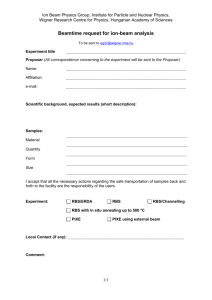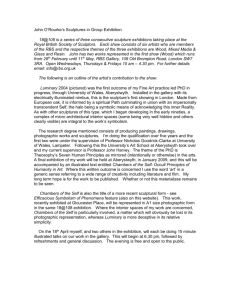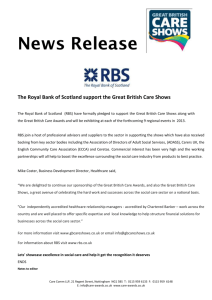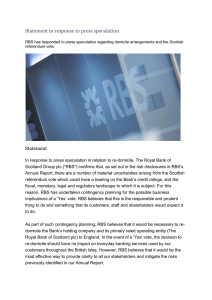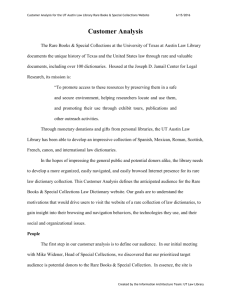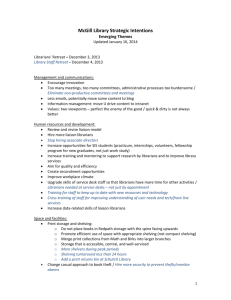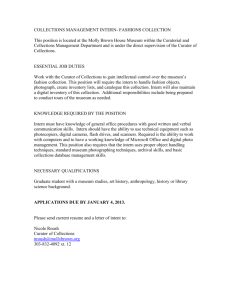Material Evidences: - Curry School of Education
advertisement
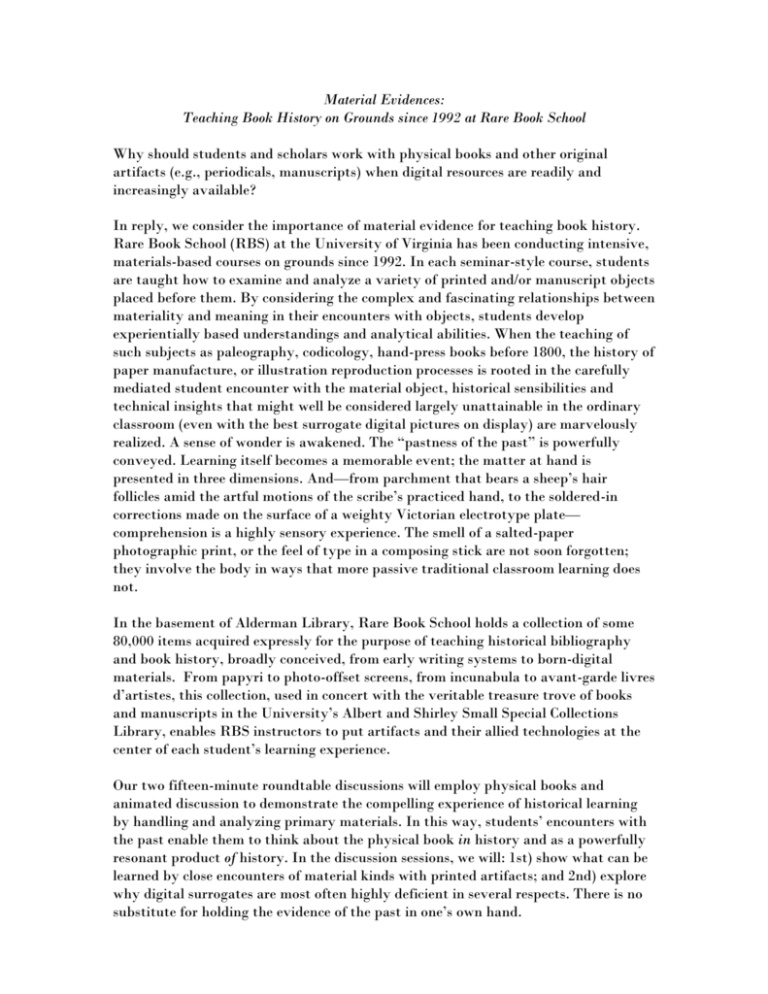
Material Evidences: Teaching Book History on Grounds since 1992 at Rare Book School Why should students and scholars work with physical books and other original artifacts (e.g., periodicals, manuscripts) when digital resources are readily and increasingly available? In reply, we consider the importance of material evidence for teaching book history. Rare Book School (RBS) at the University of Virginia has been conducting intensive, materials-based courses on grounds since 1992. In each seminar-style course, students are taught how to examine and analyze a variety of printed and/or manuscript objects placed before them. By considering the complex and fascinating relationships between materiality and meaning in their encounters with objects, students develop experientially based understandings and analytical abilities. When the teaching of such subjects as paleography, codicology, hand-press books before 1800, the history of paper manufacture, or illustration reproduction processes is rooted in the carefully mediated student encounter with the material object, historical sensibilities and technical insights that might well be considered largely unattainable in the ordinary classroom (even with the best surrogate digital pictures on display) are marvelously realized. A sense of wonder is awakened. The “pastness of the past” is powerfully conveyed. Learning itself becomes a memorable event; the matter at hand is presented in three dimensions. And—from parchment that bears a sheep’s hair follicles amid the artful motions of the scribe’s practiced hand, to the soldered-in corrections made on the surface of a weighty Victorian electrotype plate— comprehension is a highly sensory experience. The smell of a salted-paper photographic print, or the feel of type in a composing stick are not soon forgotten; they involve the body in ways that more passive traditional classroom learning does not. In the basement of Alderman Library, Rare Book School holds a collection of some 80,000 items acquired expressly for the purpose of teaching historical bibliography and book history, broadly conceived, from early writing systems to born-digital materials. From papyri to photo-offset screens, from incunabula to avant-garde livres d’artistes, this collection, used in concert with the veritable treasure trove of books and manuscripts in the University’s Albert and Shirley Small Special Collections Library, enables RBS instructors to put artifacts and their allied technologies at the center of each student’s learning experience. Our two fifteen-minute roundtable discussions will employ physical books and animated discussion to demonstrate the compelling experience of historical learning by handling and analyzing primary materials. In this way, students’ encounters with the past enable them to think about the physical book in history and as a powerfully resonant product of history. In the discussion sessions, we will: 1st) show what can be learned by close encounters of material kinds with printed artifacts; and 2nd) explore why digital surrogates are most often highly deficient in several respects. There is no substitute for holding the evidence of the past in one’s own hand. Presenters: Michael F. Suarez, S.J. is University Professor, Director of Rare Book School, Professor of English, and Honorary Curator of Special Collections. His most recent publication is The Oxford Companion to the Book (2010), a million-word reference work that the Sunday Telegraph in London called “colossal” and “a paradise for book lovers” and The Wall Street Journal praised as “a fount of knowledge where the Internet is but a slot machine.” He is currently teaching a USEM on book history that meets weekly in UVA’s special collections. Barbara Heritage, a doctoral student in the Department of English, is Assistant Director of Rare Book School and its Curator of Collections. An Echols Scholar and Distinguished Major (BA/MA, CLAS ‘01-2), Ms. Heritage has published two scholarly articles based on her research at RBS, where she has worked for eight years. She cocurated with John Buchtel (a fellow UVA alumnus) an exhibition on the novel Jane Eyre. The exhibition was based on their research at RBS; it first appeared in the Dome Room of the Rotunda and then later traveled to Johns Hopkins University. The exhibition was favorably reviewed in a number of venues, including The Boston Globe.
